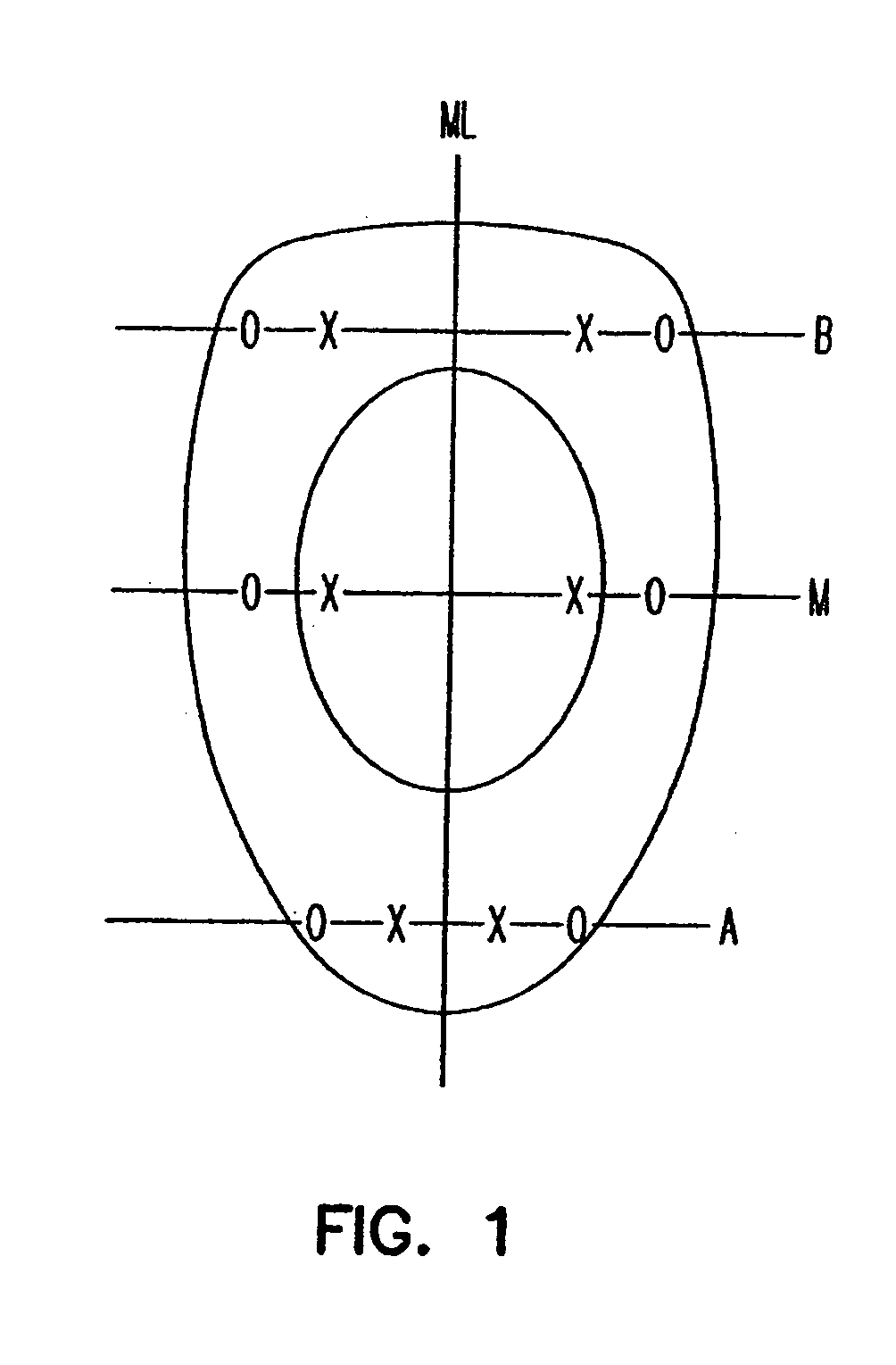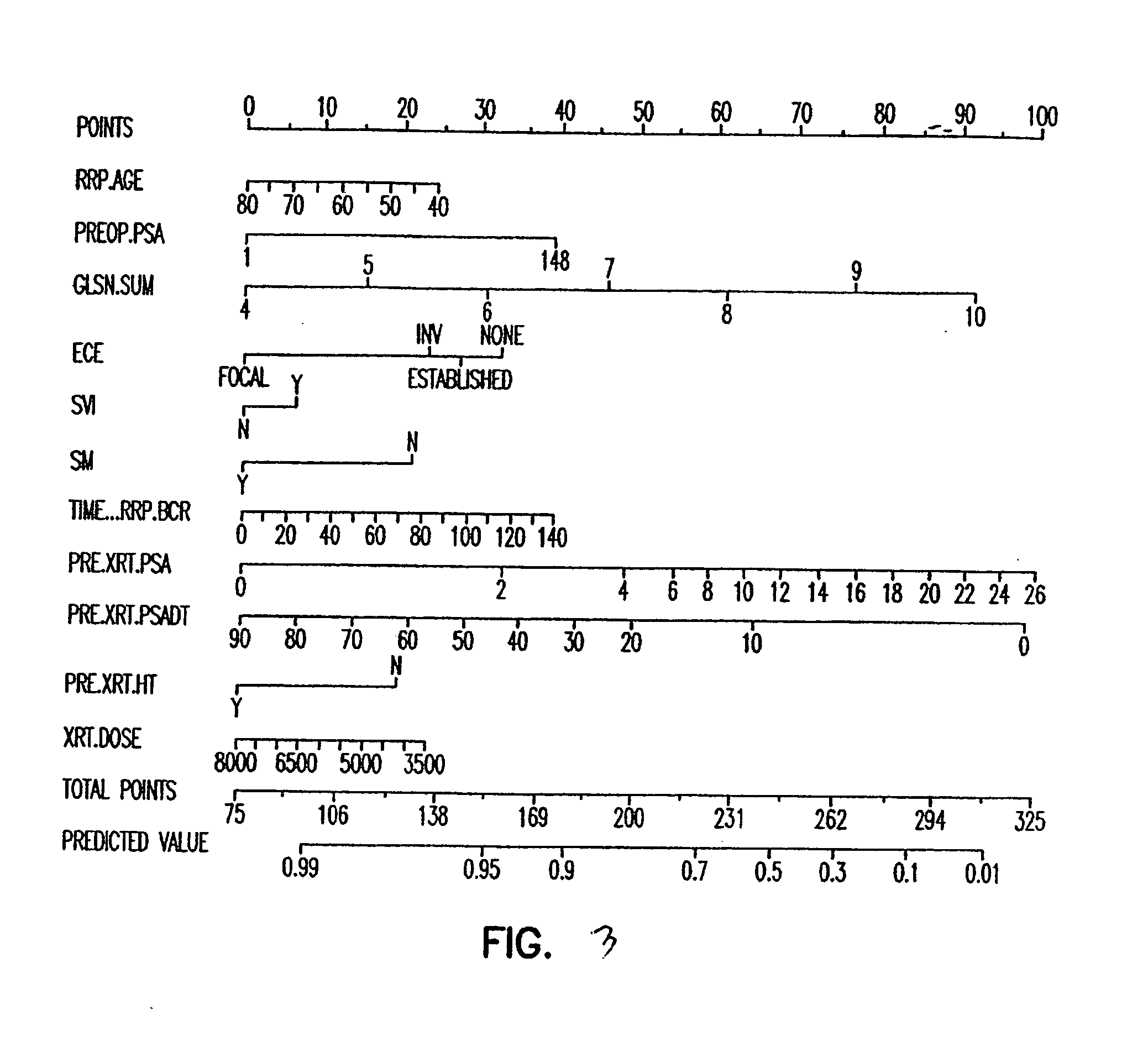Method to predict prostate cancer
- Summary
- Abstract
- Description
- Claims
- Application Information
AI Technical Summary
Benefits of technology
Problems solved by technology
Method used
Image
Examples
example 1
TGF-β1 Measurements
[0076] Serum and plasma samples may be collected on an ambulatory basis, e.g., at least 4 weeks after transrectal guided needle biopsy of the prostate, typically performed on the morning of the scheduled day of surgery after a typical pre-operative overnight fast. Blood may be collected into Vacutainer® CPT™ 8 mL tubes containing 0.1 mL of 1 M sodium citrate anticoagulant (Becton Dickinson Vacutainer Systems, Franklin Lakes, N.J.) and centrifuged at room temperature for 20 minutes at 1500×g. The top layer corresponding to plasma may be decanted using sterile transfer pipettes and immediately frozen and stored at −80° C. in polypropylene cryopreservation vials (Nalgene, Nalge Nunc International, Rochester, N.Y.). Prior to assessment, an additional centrifugation step of the plasma at 10,000×g for 10 minutes at room temperature for complete platelet removal may be performed. For quantitative measurements of platelet-poor plasma and serum TGF-β1 levels, a quantitat...
example 2
[0086] A similar analysis was conducted for IL-6 and IL6sR (using R&D Systems Quantikine kits for IL-6 and IL6sR, catalog numbers DR6050 and DR600, respectively) and it was found that the pre-operative plasma levels of IL-6 and IL6sR were correlated with clinical and pathological parameters in the 120 patients who underwent radical prostatectomy (Tables 7-8). Plasma IL-6 and IL6sR levels in patients with bone metastases were significantly higher than those in healthy subjects, in prostatectomy patients, or in patients with lymph node metastases (P values≦0.001). In a pre-operative model that included IL-6 or IL6sR in addition to Partin nomogram variables, pre-operative plasma IL-6, IL6sR, and biopsy Gleason score were independent predictors of organ-confined disease (P values≦0.01) and PSA progression (P values≦0.028). In an alternative model that included both IL-6 and IL6sR, only pre-operative plasma IL6sR remained an independent predictor of PSA progression (P=0.038). Thus, IL-6 ...
example 3
VEGF and sVCAM-1 Measurements
[0095] Plasma samples may be collected after a pre-operative overnight fast, e.g., on the morning of the day of surgery, at least 4 weeks after transrectal guided needle biopsy of the prostate. Blood may be collected into Vacutainer®CPT™ 8 mL tubes containing 0.1 mL of Molar sodium citrate (Becton Dickinson Vacutainer Systems, Franklin Lakes, N.J.) and centrifuged at room temperature for 20 minutes at 1500×g. The top layer corresponding to plasma may be decanted using sterile transfer pipettes. The plasma is immediately frozen and stored at −80° C. in polypropylene cryopreservation vials (Nalgene, Nalge Nunc, Rochester, N.Y.). It has been previously found that VEGF levels are higher when measured in serum than when measured in plasma. Since VEGF is present in platelet granules and is released upon platelet activation, the higher levels of VEGF in serum are likely due at least in part to release from damaged platelets, making the quantification of non-p...
PUM
| Property | Measurement | Unit |
|---|---|---|
| Fraction | aaaaa | aaaaa |
| Fraction | aaaaa | aaaaa |
| Fraction | aaaaa | aaaaa |
Abstract
Description
Claims
Application Information
 Login to View More
Login to View More - R&D
- Intellectual Property
- Life Sciences
- Materials
- Tech Scout
- Unparalleled Data Quality
- Higher Quality Content
- 60% Fewer Hallucinations
Browse by: Latest US Patents, China's latest patents, Technical Efficacy Thesaurus, Application Domain, Technology Topic, Popular Technical Reports.
© 2025 PatSnap. All rights reserved.Legal|Privacy policy|Modern Slavery Act Transparency Statement|Sitemap|About US| Contact US: help@patsnap.com



